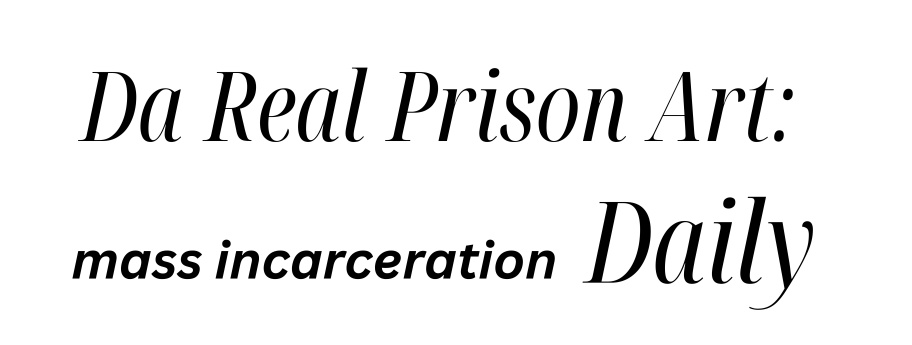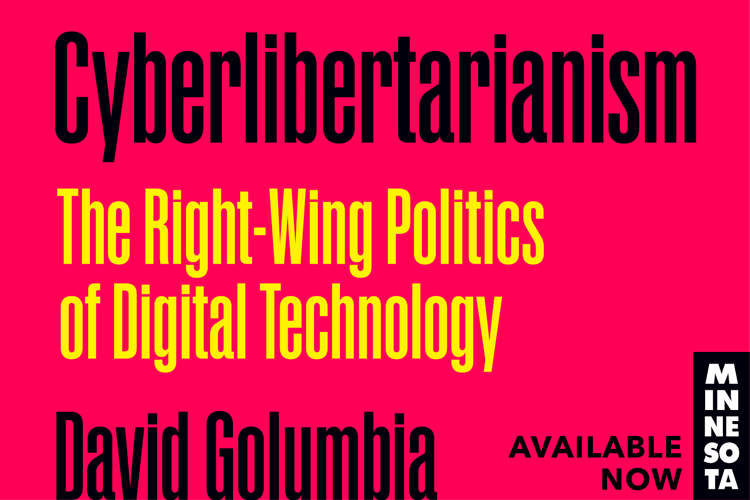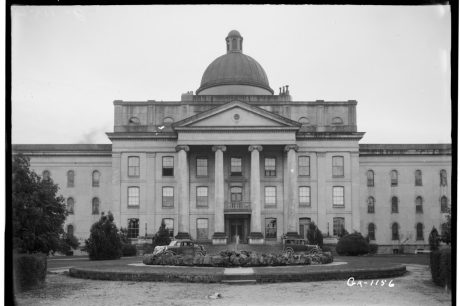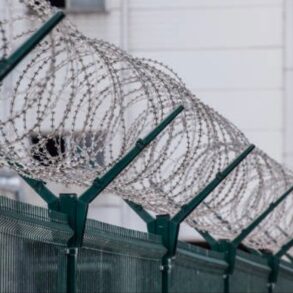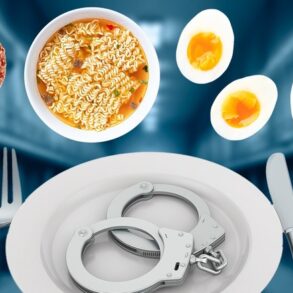In The Carceral City: Slavery and the Making of Mass Incarceration in New Orleans, 1803–1930, historian John Bardes recounts how Southern slaveowners relied on publicly funded urban jails to discipline, torture, and break enslaved people. It’s a shocking finding, as Bardes reveals that rates of incarceration for Black people were higher during the Civil War than they are today. But the book also shows, with great care, how the intimacy of enslavement fueled incarceration in Southern “police jails.” By sending slaves there, Southern slaveholders distanced themselves from the violence it took to dehumanize people who were already viewed as chattel. In doing so, Bardes finds, these slaveholder penologists understood that enslaved people were human.
Bringing to bear the perspectives of enslaved people and free Black people through their letters, Bardes shows that this system of carceral violence criminalized all Black people and was foundational in shaping Black experiences of work, public space, and migration in early America. To me, The Carceral City opens up an incredible set of possibilities for early American carceral history. It was a treat to talk with John Bardes, an assistant professor of history at Louisiana State University whose work has been published in Journal of African American History, American Quarterly, Journal of Southern History, and Southern Cultures, and my coeditor on the forthcoming Cambridge Companion to American Carceral History.
Melanie Newport (MN): Can you tell me a bit about the big idea of The Carceral City?
John Bardes (JB): For a long time, popular accounts of mass incarceration have argued that prisons and police only emerged in the South after slavery’s destruction during the Civil War. They’ve stated that racialized incarceration emerged as a way of “replacing” slavery or re-creating the racial control that slaveholders had previously maintained.
My book argues that that narrative is wrong. In fact, in parts of the slave South, enslaved people were arrested at astronomically high rates and were systematically imprisoned and forcibly worked through advanced networks of specialized slave prisons. In particular, in New Orleans, which is the focus of my book, enslaved people before the Civil War were actually incarcerated at far higher rates than freed people after the Civil War, or Black Americans today. In other words, mass incarceration as we know it is not a new phenomenon, and this complicated relationship among race and violence and slavery is as old as the American prison itself.
MN: One of the analytical tools you use to really great effect in the book are arrest and incarceration rates. There is an amazing chart from 1820 to 2020 showing the highs and lows of incarceration in New Orleans. We see that right at the edge of the Civil War, slaveholders put their slaves in jail on purpose, as a kind of safekeeping of their property.
That part was wild to me, because it shows that the Jim Crow era—typically considered an apex of racialized mass imprisonment—was actually a low point for jailing in New Orleans!
In the book, you find that major arbiters of that system were slave-owning lawmakers. Can you talk a bit about those folks and why they were so important to the development of the prison? I don’t know that I ever really sat with the idea that slaveholders were actually some of our most important penal theorists.
JB: There is a long history in academia of segregating slavery and the South from the larger narrative of American history, and you see this especially in the histories of the prison. For a very long time, scholars assumed that the South had no need for prisons, that prisons were an institution developed by the so-called enlightened, modern societies of New England, Pennsylvania, New York—places where Enlightenment theorists were innovative agents. The slaveholding South, by contrast, was imagined as this barbaric, backward, antimodern place, completely separate from the main narrative of American history.
What I show in The Carceral City is that in the immediate aftermath of the American Revolution, at the same time that Enlightenment theorists in New York, London, and Philadelphia were imagining and debating the design of the world’s first prisons, slaveholders in the South were engaged in very similar debates. They were, in fact, in many ways just as engaged as their Northern peers and actively tried to think about what a prison should look like for a society that was economically and socially dependent on slavery.
Edward Livingston really epitomizes these proslavery, slaveholding, Enlightenment thinkers for me. He was a prominent New Yorker and onetime mayor of New York City. He came from a long political dynasty; his brother had actually been on the Committee of Five that had drafted the Declaration of Independence, back in 1776. Livingston moved to New Orleans in 1804, the same year as the Louisiana Purchase, and bought a sugar plantation, quickly becoming a wealthy member of the slaveholding elite.
He then plunged his intellectual energies into prison design, becoming one of the leading prison theorists in the world during the first half of the 19th century. His theories were implemented in prisons all across Europe, Australia, the Americas—he had a global influence. In The Carceral City I show that at the exact time that Livingston was taking part in the invention of the world’s first modern prisons, he was regularly having the people he held in slavery in New Orleans incarcerated in slave prisons. The only prison that he actually interacted with on a regular basis was the New Orleans slave prison, so his ideas about punishment, captivity, and violence were all being directly informed by his experiences as a slaveholder generally and by his observations of slave prisons in particular. In other words, through Edward Livingston, the New Orleans slave prison shaped the global history of the prison. You can’t segregate the history of slave prisons from the broader history of American penology.
MN: In carceral history, we have these nuanced conversations about taxonomy, like, When is a jail a jail? How much are jails like prisons? Were early jails actually proto-prisons? Where do police lockups fit? Your work offers another piece of the institutional puzzle by giving us this really unique institution to think about: the slave prison. Can you tell me about the transnational origins and development of the New Orleans Police Jail and how it became a place for enslaved people?
JB: The New Orleans slave prison was known as the Police Jail. It emerged at this very important moment in American history, which was the intersection of the Louisiana Purchase in 1803 and the revolution in Saint-Domingue, today known as Haiti, after which thousands of Black and white refugees fled to the US, spreading stories of the revolution and stoking tremendous fear of slave insurrection. So at this moment, slaveholders in New Orleans were simultaneously greedy and terrified. With the rise of sugarcane and cotton production after the Louisiana Purchase, they saw opportunity to amass unprecedented fortunes as slaveholders. At the same time, they were absolutely terrified that the enslaved of Louisiana were about to revolt and that the revolution in Saint-Domingue would spread into the US.
The slave prison for Louisiana slaveholders was a way to continue amassing profits without losing control over enslaved workers. It was a way to continue the growth of the plantation complex while minimizing the risk of slave insurrection. They imagined that the slave prison would transform rebellious and resistant enslaved people into submissive and subjugated servants; that it would effectively be a factory that would seize rebellious people and beat them and brutalize them into submission.
MN: I just want to highlight, this is a really huge finding. One of the major assumptions of the prison literature, and I’ve been seeing this is a lot as I go back into this literature from the ’70s and the ’80s especially, was that enslaved people could not be rehabilitated, so it was a waste of time to incarcerate them.
So there was none of this Enlightenment-era spiritual element that you see in the typical idea of the penitentiary, where proponents sent people to prison to die and be reborn. You found that Southern penal administrators were actually deliberately creating special forms of humiliation, degradation, and dehumanization within the Police Jail for enslaved people to experience.
JB: Right. Slaveholding authorities in New Orleans did believe that the prison could have a transformative effect on Black people. The difference is that whereas Enlightenment theorists in the Northeast imagined that prisons would (at least in theory) uplift people into better citizens, Louisiana slaveholders saw in the prison a machine for brutalizing people into ideal slaves. So slaveholders also imagined a place for transforming people, but they wanted to design a prison that would inflict a different, more sadistic transformation.
One of the things that really shocked me during my research was seeing how authorities in New Orleans were very deliberate and thoughtful in designing and perfecting a prison for the brutalization of Black people. They debated how to make the prison experience more brutal, more humiliating, more dehumanizing.
One chilling moment I found in the records was when city authorities debated whether enslaved prisoners should be assigned a new uniform and some of them proposed, “Well, what if we dressed them like clowns in odd patchwork colors so that the experience of being a prisoner is even more humiliating than it otherwise would be?” They were thinking, in other words, very deliberately about how to maximize the Black prisoners’ dehumanization and suffering.
MN: For a long time, historians believed that the use of public punishments ended with the rise of the penitentiary, which never really made sense for anybody who understood the place of chain gangs in the story. But you are saying that this dichotomy between indoor and outdoor punishments was a really essential, racialized distinction in the early world of punishment?
JB: Yes. As the prison evolved in Louisiana, authorities developed the theory that the ideal way to transform a Black prisoner was to publicly humiliate them. So authorities decided that Black prisoners would be organized into penal labor details and marched throughout the streets and assigned to outdoor construction work. In part this was an inexpensive way to build public infrastructure, but authorities also argued that the experience of performing work in public would be degrading and humiliating. They were doing this, in other words, so that the prisoners could be seen. In essence, they had invented what would eventually become known as the “chain gang.”
The inverse of that is they developed a theory that white prisoners needed to be kept indoors and away from the public sight at all times. In the minds of Louisiana’s 19th-century leaders, the line between white captivity and Black captivity was transmuted onto a division between indoor penal labor and outdoor penal labor.
MN: Can you say more about why slaveholders used slave prisons and what they were getting for these jail fees? The comments you make about them distancing themselves from the violence are really interesting.
JB: Slaveholders believed that slave prisons worked, that slave prisons were effective at breaking people. And they were often willing to pay a great deal of money to have an enslaved person incarcerated and tortured by a professional jailer.
Of course, having an enslaved person incarcerated also meant that the person wasn’t performing labor for their enslaver during that period. We often think of slavery as exclusively a profit-seeking institution, so it sounds very strange to us in the 21st century to hear that a slaveholder would be willing to spend so much money to have an enslaved person work for somebody else, as a penal laborer. But slaveholders did this because they saw it as an investment in their enslaved capital. They thought that the enslaved prisoner would be returned a broken person, a better slave, as horrific as that sounds.
You can see slaveholders’ thought processes in their journals and diaries, where many of them wrote about how they were going to send rebellious enslaved people to the slave prisons in New Orleans because they had tried whipping them privately or inflicting other personal forms of violence but believed that it hadn’t worked. So now they were going to resort to the prison.
In some ways the role of slave prisons was as complex and dynamic as the role of prisons in our society today. Another dynamic, especially in cities like New Orleans, was that urban slaveholders often felt anxious about inflicting physical torture in front of their neighbors, or about inflicting physical torture directly. Slaveholders in cities didn’t have any overseers to rely on for that. So prisons provided a way for urban slaveholders, in particular, to create the illusion of emotional distance between themselves and the infliction of torture. It was a way to imagine that they were not themselves inflicting torture, but rather the violence was being performed in a safe, bureaucratized, rational, government-managed environment. It was a way to help them rationalize the suffering that they were inflicting.
One of the most horrific parts of this is the incarceration of enslaved women. Enslaved women in New Orleans were incarcerated at very high rates. In particular, one of the ugly patterns that emerges from the records of New Orleans’s slave prisons is that slaveholders routinely had women jailed, often for very long times, because the infliction of physical violence on women triggered a particularly acute set of anxieties in them. They felt more comfortable paying a professional jailer to torture a woman than doing it themselves. But the consequence was that women were jailed at really high rates.
MN: And for longer—it seems like some enslaved women were being incarcerated for life.
JB: Correct, women on average were jailed for significantly longer times than men. While going through the records of New Orleans’s slave prisons, I came across letters from slaveholders to the prison saying, essentially, “I would like to have my female slave incarcerated for the remainder of her life and I am willing to lose all financial stake in this woman. I just want her worked and tortured for the rest of her life.” That is profoundly disturbing to us in the 21st century, but it speaks to how this society was trying to inflict specifically gendered forms of racialized violence.
MN: Let’s shift gears from slave prisons and talk about vagrancy laws. One of the things you show is that after the Civil War, vagrancy laws were widely used throughout the South as a way of targeting freedpeople, coercing their labor, preventing them from leaving plantations, and blocking their economic advancement. Your book shows that the use of vagrancy laws to coerce workers’ labor actually started in New Orleans before the Civil War. Can you talk about that?
JB: Before the Civil War, vagrancy laws were the main legal mechanism by which authorities in New Orleans sought to arrest and coerce the labor of poor white people. At face value, vagrancy laws criminalized people who looked underemployed: those who, in the perception of law enforcement agents, were not performing the amount of labor that they could be performing, or who worked odd jobs here and there. But in practice, vagrancy laws were widely used, both in New Orleans and throughout the 19th-century US, as a way of coercing wage laborers into working longer hours and for less compensation, and as a way of seizing workers for the creation of penal labor crews. In other words, at the same time that New Orleans had very elaborate penal systems targeting enslaved workers, the city also had these very, very elaborate systems for coercing poor white wageworkers through vagrancy laws. On the eve of the Civil War, New Orleans had by far the highest vagrancy arrest rate of any major city in the US.
MN: One of the things that your work helped me to understand was just how deep this commitment to criminalizing vagrancy went, particularly that it was explicitly about disciplining labor. You note that at the end of Reconstruction, vagrancy criminalization offered a way of forcing free Black people to internalize the idea that they needed to work as hard as possible all the time, and that this amounted to a work speedup for everyone.
It was really alarming to me to think about what it would have been like to live in that environment of fear. It really drove home why, as scholars like Brandon Jett are finding, there was to some degree a culture of compliance among Black New Orleanians during Jim Crow because they were living within this really discretionary, dangerous system all the time, 24/7.
JB: The US Supreme Court ruled vagrancy laws unconstitutional in the 1970s. We as a society have really forgotten what a tremendous shadow vagrancy laws cast over all working Americans throughout the US throughout the 19th and most of the 20th century. Throughout that time, in most communities, vagrancy was the second most common reason for arrest, after public intoxication. All throughout the country, people were systematically arrested, rounded up, often en masse, on vagrancy charges. For working people, dodging a police officer who was trying to arrest you for vagrancy was a very, very familiar and common experience.
For Black Southerners in particular throughout the Jim Crow era, the threat of being seized as a vagrant and then being impressed on a chain gang had a tremendous influence on their life.
slave prisons left behind dozens of volumes of register books containing somewhere in the ballpark of 100,000 unique entries of incarcerated enslaved people.
MN: We’ve talked before about what Kelly Lytle Hernández calls the rebel archive, or the ways that we can track resistance to carceral regimes over time. One of the things that surprised me in your book was how many letters you had from people who were incarcerated in the slave jail, especially imprisoned Black sailors. You have documentation that they were running into their childhood friends from New England while they were in the chain gang on the street. They were writing letters to their ship captains, they were sending letters out written in blood or contraband ink. This is just an amazing amount of source material to work with.
How did we overlook these sources for so long?
JB: I don’t know, to be honest. I was shocked by how many letters written by incarcerated sailors in antebellum New Orleans have survived.
Free Black sailors were perhaps the most criminalized population in 19th-century America because slaveholders were terrified that they would help fugitive slaves, orchestrate slave rebellions, and spread radical, antislavery literature. Police in New Orleans arrested hundreds of free Black sailors each year. Instead of taking them to the prison for legally free people, the city’s policy was to treat them as though they were fugitive enslaved people. So free Black sailors were taken to the slave prison and jailed for months or years. That’s why they produced so many letters, and why their stories were so easy to reconstruct: Those sailors tried very hard to smuggle letters out of the prison, to contact their families back home and let them know where they were.
MN: I was intrigued too by the way that the Black press was uplifting their stories and really trying to draw attention to the danger that Black sailors faced in going south. It got to the point that ship captains began hiding their ships’ actual destination from the Black crewmen, and Black sailors would actually mutiny when they learned that they were headed for New Orleans.
I can’t imagine the emotions of that. It speaks to the humanity that is at the core of the story you are telling—that people had a clear conception of what their freedom meant to them and fully understood the menace of this extremely discretionary prison system that existed in New Orleans.
JB: And of course the other side of that is that free Black sailors, by necessity, were often an exceptionally well-organized group of workers. They had to be, because when traveling around the country and the world, the only people they could rely on to get them out of jams, help them find work, and help them negotiate the dangers of different port cities were each other. The silver lining of this is that whenever a free Black sailor was incarcerated, they had a network of friends and colleagues who would do what they could to rescue them, which is another reason we have these letters—sailors worked so hard to smuggle them out of prison.
MN: Just to give folks a flavor of how rare these sources are: For Chicago, where the jail opened in the 1830s, I have maybe one example of a person accused of being an escaped slave, and he was actually sold in a slave sale outside the jail. Here you are showing that this was actually the major function of the institution.
That is one thing I love about the kinds of direction that carceral history is going, as we recover more of these local stories that show that the local, the national, and the transnational are not mutually exclusive. A major provocation of your book is really trying to bring the South back into early American carceral history.
JB: It speaks to our profession’s blind spots and biases. The antebellum New Orleans police department left behind dozens of volumes of arrest books containing somewhere in the ballpark of 400,000 distinct records of arrests made between 1816 and the outbreak of the Civil War. The slave prisons also left behind dozens of volumes of register books containing somewhere in the ballpark of 100,000 unique entries of incarcerated enslaved people. I should not be the first person to discover the existence of these ledgers. It is only because we for so long assumed that prisons and police forces couldn’t have existed in the slave South that we have missed this incredibly voluminous archival record.
MN: The historian Edmund Morgan famously identified what he called “the American paradox,” which was the idea that freedom and slavery defined each other throughout American history. You mention in your epilogue that perhaps it is time to broaden Morgan’s classic formulation by seeing how incarceration has historically provided and continues to provide Americans with the means of mediating relations between slavery and freedom. That the American paradox is less a dichotomy than a trichotomy: “slavery, freedom, and the prison, locked in interdependent evolution while providing one another with meanings.”
JB: I stand by that. I really think that the prison as we know it today is a deeply, deeply American institution in the sense that it is an institution born of these struggles to figure out what freedom means, what the universal rights of people ought to be, what forced labor means, and what punishment should look like in a nominally free society. These are deeply American struggles to negotiate slavery and freedom’s meaning. ![]()
This article was commissioned by Charlotte E. Rosen.
This post was originally published on this site be sure to check out more of their content.
